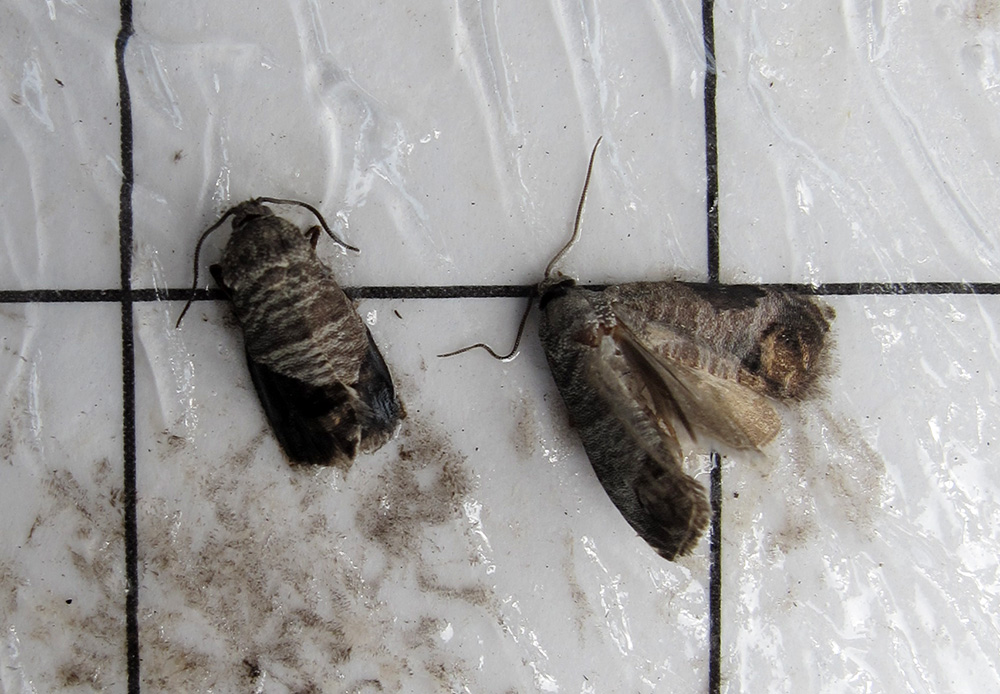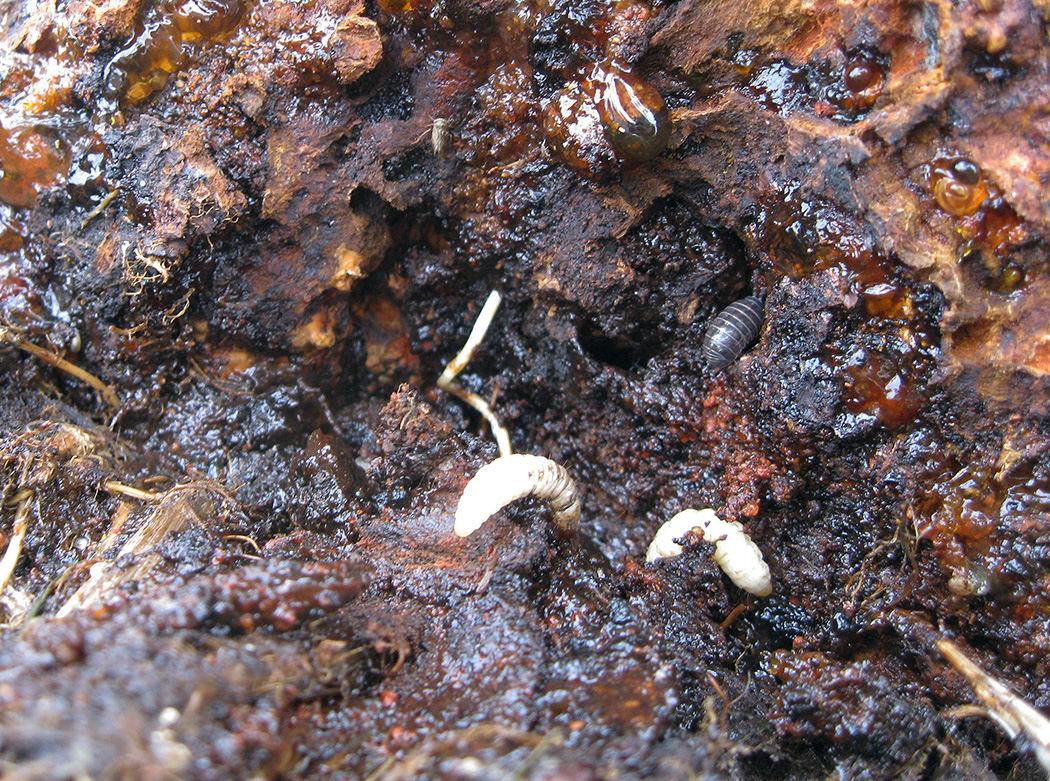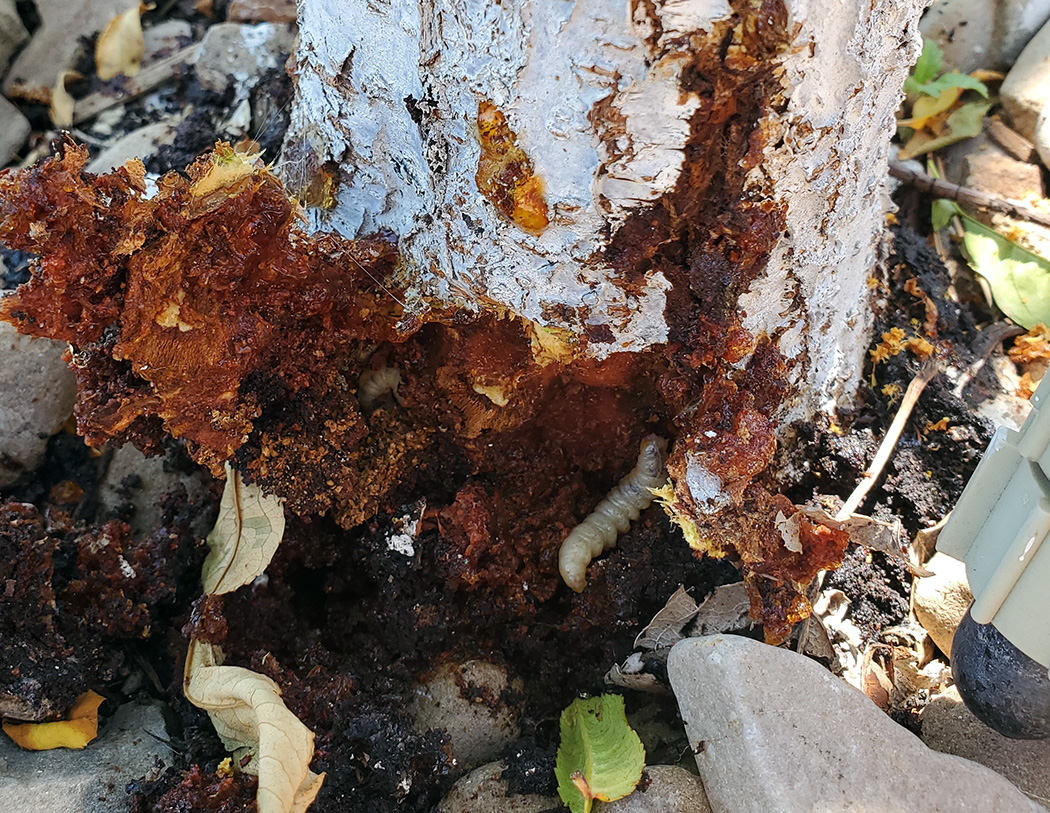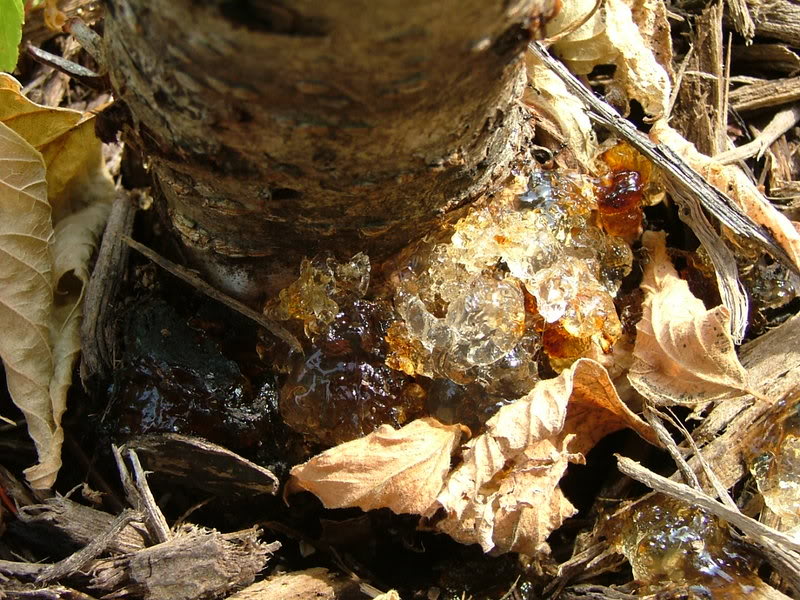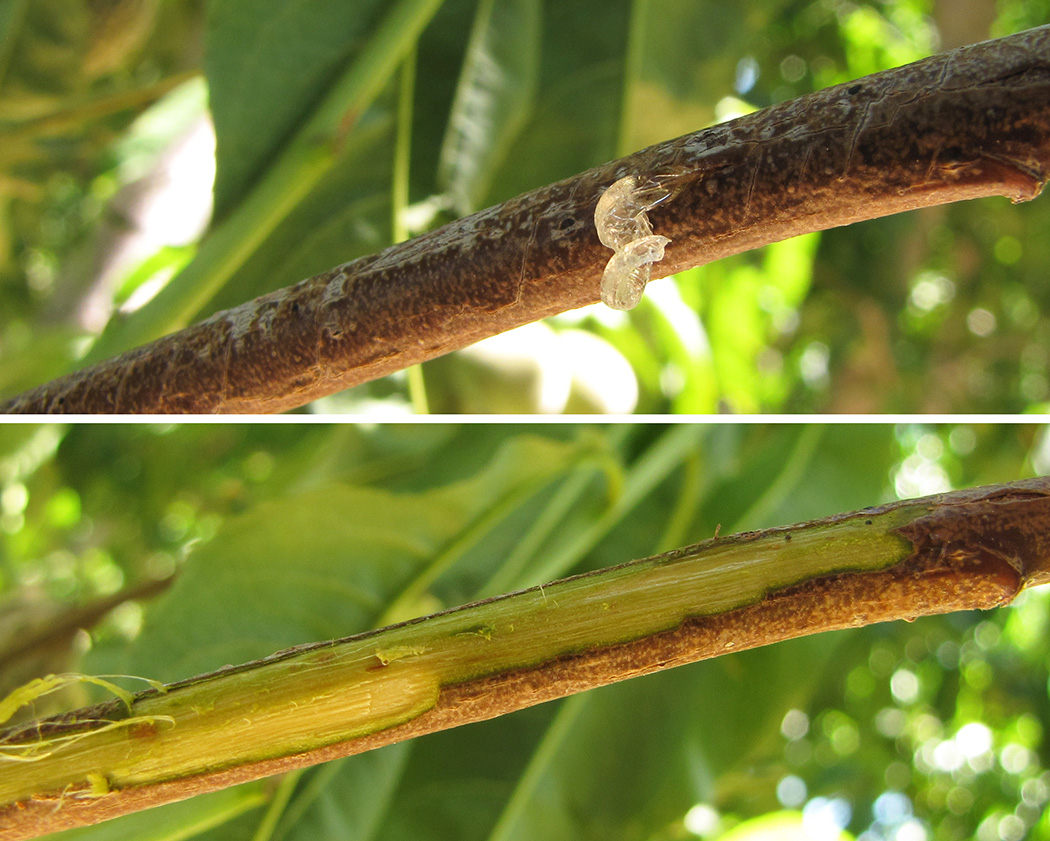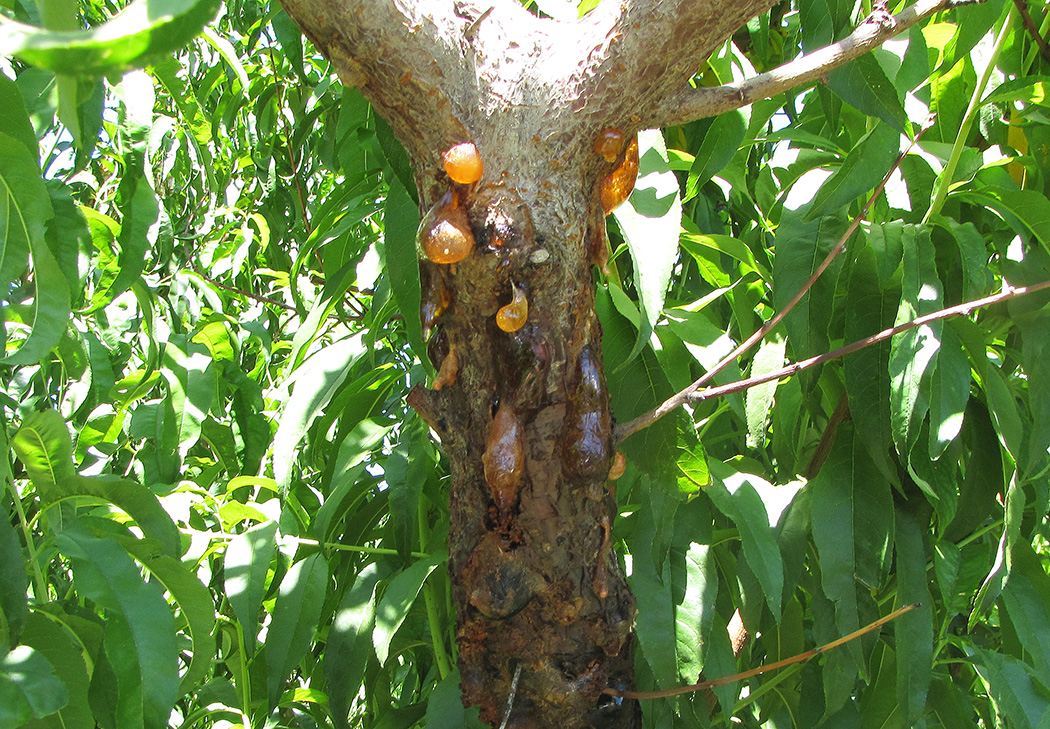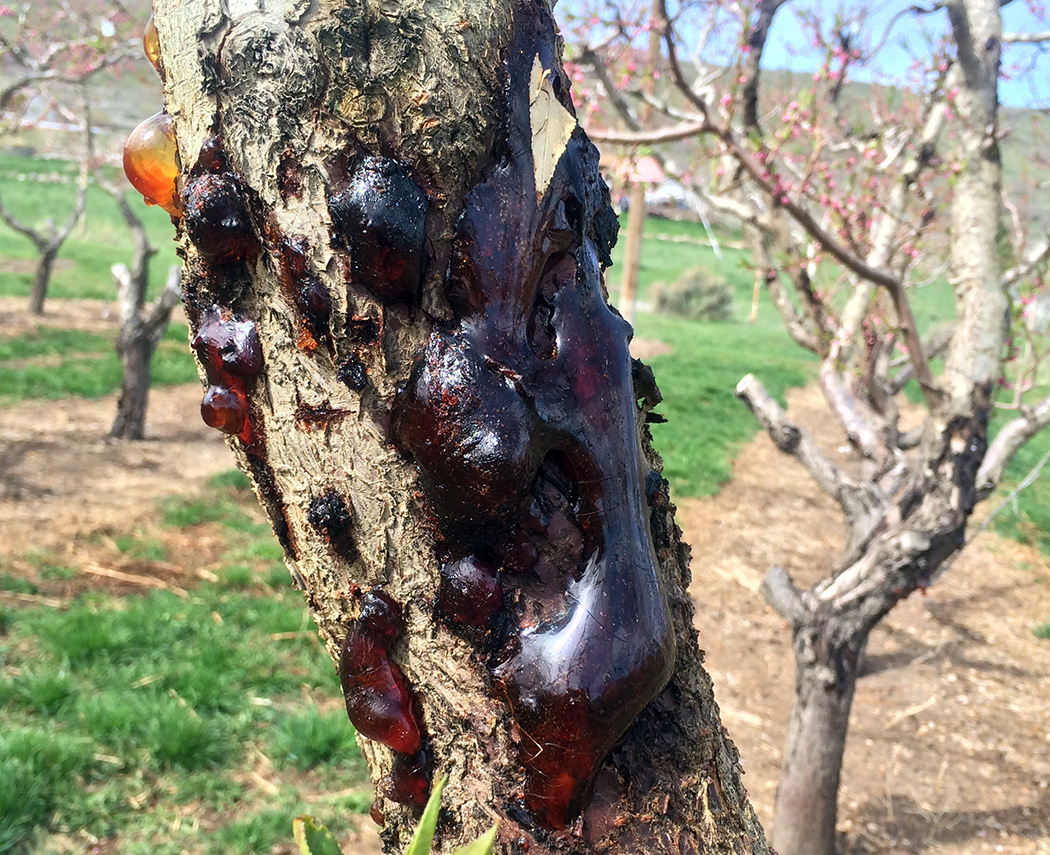Fruit-IPM-CM-06-15-24
Fruit
Cherry powdery mildew starts on the lowest leaves of the canopy. Look on the leaf undersides for the powdery mycelium.
Fruit-IPM-CM-05-17-24
Fruit-IPM-CM-05-03-24
Codling moth adult males caught on a pheromone trap.
Remove turf and other plants from around the base of trees to prevent greater peachtree borer.
Push the gumming aside and expose and kill the caterpillar borers.
Push the gumming aside and expose and kill the caterpillar borers.
Gumming from greater peachtree borer is copious in spring.
Clear ooze and healthy tissue under the ooze indicates an environmental cause.
The gummosis on this tree is due to a frost crack wound.
Clear gumming on a sweet cherry of unknown environmental cause.
Clear ooze and healthy tissue under the ooze indicates an environmental cause.
Gumming from cytospora canker will be lighter at first, and age darker.
Hardened, dark amber gum from cytospora canker, with newer gumming at top left.


